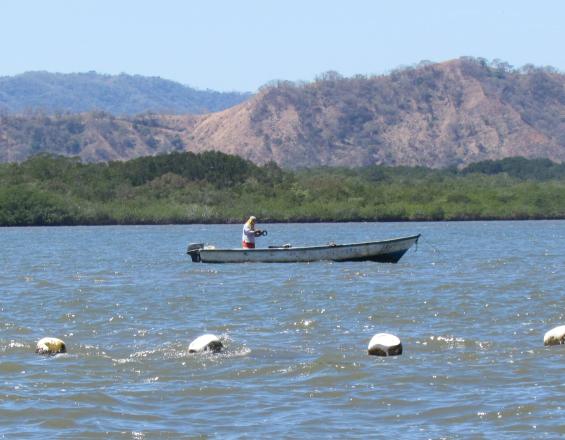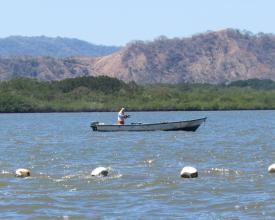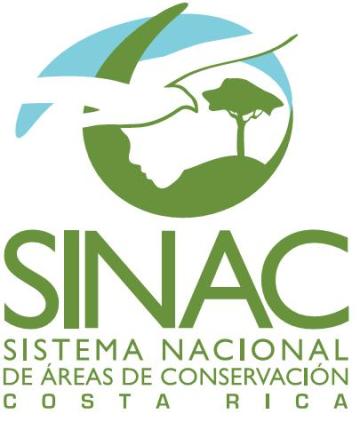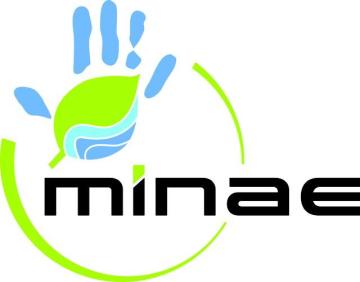
Multi-sectoral coastal and marine management vision

This solution uses scientific information to prioritize sites of importance for conservation that are vulnerable to climate change on the northern Pacific coast of Costa Rica. A consultative process with participation by residents, fishermen, and local and regional authorities, builds a shared vision for sustainable management of coastal and marine resources. Dialogue platforms establish geographical areas, the governance model and management rules.
Context
Challenges addressed
- Lack of stakeholder engagement
- Unsustainable use of natural resources
- Analysis needed to identify gaps in existing biological conservation approaches and sites of conservation importance that are representative of critical areas
- Communities and ecosystems are vulnerable to climate change impacts
- Improve the governance of coastal and marine environments
- Develop participatory processes that include the local residents’ interests
Location
Process
Summary of the process
Building Blocks
National protected areas coverage analysis
Three scientific studies provide technical information to identify areas that should be included in the national system of protected areas. An evaluation of marine ecoregions in Mesoamerica was the first step to achieve a marine and coastal biodiversity conservation agenda at the regional level. To meet the targets established for the eco-regional level, gaps in representativeness and integrity for the marine and coastal biodiversity in Costa Rica were identified through a comparison of the national system of marine protected areas with the sites of conservation importance identified during the evaluation. National sites of conservation importance were prioritized in the gap analysis. Additional technical evaluations to elaborate on the state of conservation at a local site level were done. This scientific information helped to build up considerations for local level priorities, and the actual and potential uses along with the use conflicts.
Enabling factors
- Committed International and national NGOs have technical and financial assistance to develop these scientific studies.
- Costa Rica is a signatory country to international biodiversity conventions and agreements, committing them to increasing conservation measures for sites of biological importance.
Lesson learned
The gap analyses for biological conservation are a key element for the prioritization of sites of importance for conservation. The information provided in these studies constitutes a baseline to delve into more specific and local aspects. Scientific information enables informed decision making for increased conservation measures.
Vulnerability and climate risk assessment
The scientific study identifies coastal and marine areas of Costa Rica that are particularly vulnerable to climate change impacts. The vulnerability analysis combined three factors: exposure, potential impacts and the adaptive capacity of communities to respond to these impacts. Through these three factors the climatic threats of sea level rise, atmospheric temperature rise and changes in precipitation patterns were evaluated to identify vulnerability. The analysis supports the prioritization of climate change adaptation actions for protected areas and districts of local communities. These actions include the recovery of key habitats such as riparian forests, mangrove forests, beach terraces and the relocation of touristic trails close to the beach within the protected areas.
Enabling factors
- Available scientific information.
- Technical and financial support to address the process
Lesson learned
Vulnerability to climate change varies widely in the study area and is closely related to human and economic development. The study found that implementation of possible adaptation measures must begin with changes in development patterns and the reduction of existing pressures on the ecosystem, otherwise known as non-climatic threats. The study also found that poor resource extraction practices and the establishment of coastal settlements increase the sensitivity of ecosystems and the exposure of coastal communities.
Legally established participatory process
An Administrative resolution was made by the local conservation authorities to determine the technical, social, legal and financial feasibility of implementing protected areas in the sites of conservation importance. The resolution considers information from scientific studies and highlights the importance of establishing a participatory process through the creation of a multi-sector dialogue panel. At the same time, the local authority created a follow-up Committee with institutional representatives of the national protected area management authority to legitimize the process and ensure that it is documented and institutionalized.
Enabling factors
- The existence of a legal framework that provides guidelines
- Support of the governing public body responsible for ensuring the conservation of biodiversity
- Technical and financial support
- Commitment at high political levels
Lesson learned
A legally-binding resolution provides legitimacy and institutionalizes the process, promotes empowerment, builds up confidence and credibility of local authorities and local communities.
Multi-sectorial dialogue platform
To promote voluntary participation and to achieve consensus among the key sectors involved, stakeholders including local authorities, fishermen, local residents among others, are identified through a previous mapping of actors. The different sectors then propose their representatives who are formally committed to the process by signing a document. A multi-sectorial dialogue platform is established and the interests of the stakeholders are discussed using an approach of collaborative facilitation and alternative dispute resolution. This platform addresses the issues of geographical delimitation of the management area, and the governance model with roles and responsibilities by sector and areas of use.
Enabling factors
- The process is facilitated by a neutral and recognized mediator in the area.
- Legitimacy of the process by means of the accreditation of institutional and community representatives.
- Mapping of actors as preliminary input
Lesson learned
The multi-sectorial dialogue platform promotes social cohesion among sectors. This space allows different groups to clarify about what they want and do not want to achieve in the protected area designation process. The team composed of the accredited stakeholders are the leaders of the process. The new communication dynamic created through the dialogues allows past disharmonies to disappear.
Governance model
The results of the multi-sectorial dialogues are reflected in agreements regarding implementation plans. These agreements form the basis for establishing the model of governance, or in other words the set of formal and informal rules and their enforcement mechanisms. The agreements document the stakeholders’ understandings of the geographical delimitation of the area, its zoning, and the management category. They also establish the steps to be followed in the process for implementing the management areas, such as the consolidation of a governance model through a Local Council, which is a figure that gives legal support composed of diverse representatives.
Enabling factors
- Availability of the representatives of the public sector (SINAC) negotiating teams.
- Technical and logistical support from the international cooperation.
- Approach of collaborative facilitation and alternate resolution of conflicts.
Lesson learned
Stakeholders are empowered by the process through participation in developing agreements. These agreements are a starting point and not a point of arrival, since they set the stage for future cooperation and implementation. The role of the facilitator and mediator must be neutral and independent, as it is a technical role in organizing social process. Maintaining a single platform of dialogue is important, but with opportunities for the facilitator to meet separately with each sectors. Other sectors not identified at the start in accordance with the development of the process should be included (e.g. semi-industrial fishing).
Impacts
- Improved relations between the actors and empowerment of local stakeholders.
- Different groups have strengthened their capabilities in negotiation, organization and leadership.
- There is increased clarity about what the local communities want and do not want in marine and coastal resources management.
Beneficiaries
- Local communities that depend on healthy coastal ecosystems for their livelihoods
- National System of Conservation Areas (SINAC)
- Tempisque Conservation Area
- Costa Rican Institute of Aquaculture and Fisheries (INCOPESCA)
Story
My name is Dianney Chacón. I am a fisherwoman from the community of Cabuya, Nicoya Peninsula, close to the Cabo Blanco Protected Area; I've been a fisherwoman for all of my life. My husband was a fisherman all his life. I was president of the Association of Fishermen of my town and I also belong to the Group of local Women, I know how hard the life of the fisherman is when there is not enough to live. In my town most families live from fishing, but the fish is getting scarce. Every day our fishermen leave and return with less fish and smaller sizes. Same with what they take by diving, like lobster. In our town we only do freediving, but daily we have to see how the fishermen from other places come to fish in front of our town, our territory. They use compressors and take everything, even within the marine protected area of Cabo Blanco. We cannot do anything and the different authorities themselves do not respond. To our fishing areas also shrimp boats are arriving. At the end for our own people there is nothing left. We fishermen know that we must conserve marine resources and we want to create rules to fish. But we want to be part of the process to create these rules, not someone from outside to come and tell us what to do. This group (dialogue platform) is an opportunity for us. We can think, decide and agree with the local authorities, with other social organizations, tourism entrepreneurs who also want to conserve, and in this way with the help of the government improve the situation of the fisherman. It has been difficult for everyone involved to understand what we want with the process, but we managed to reach an agreement that benefits all communities. Now we need more government support from different institutions so our proposal becomes a reality.


